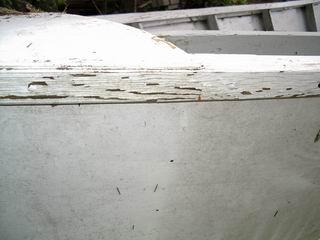
Lesson learned 1: Good paint is everything.
She has been painted only once, just when she was built.
Two coats of epoxy primer were applied, then two
coats of polyurethane top coat.
Epoxy primer is a proper paint, not resin like West Systems
or other epoxies used as glue and filler today. The primer
used was "Inerta 51" by Teknos paint factory. I believe
most large paint factories have corresponding products to offer.
The polyurethane top coat was a glossy industrial grade paint,
no sail boat pictures on the label. The brand was "Inerta 71",
by Teknos paint factory again.
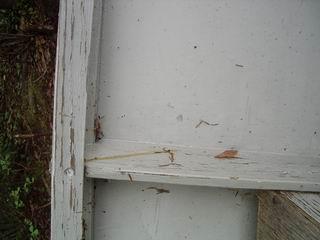
As You can see, the paint surface on plywood is as perfect as You can call perfect after 13 years of service. The paint on clear wooden parts has cracked, however. It is obvious, that some moisture penetrates the paint, wood swells, paint cracks, more moisture enters the wood...
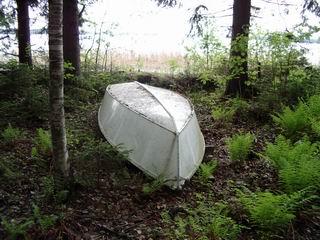
And I mean service in rough conditions. I'm too lazy to do the proper things in the autumn. Instead, I've just turned her upside down and let her rest there over the winter. Under snow and ice.
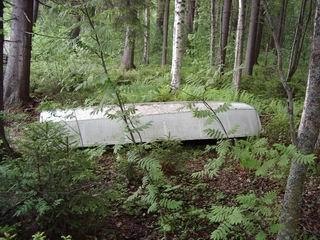
And then when spring comes, just turn her back and relaunch.
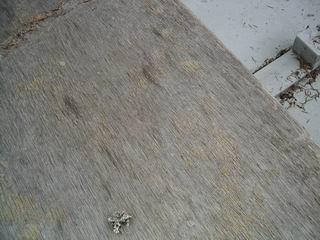
Lesson learned 2: Varnish = a lot of maintenance.
Surfaces painted with good paint are almost perfect after 13
years. Not so with varnished surfaces. The seats were varnished
with four coats of polyurethane boat varnish. And they were
sanded and revarnished six years ago.
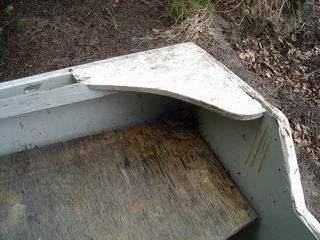
The varnished surfaces look horrible. I'll never varnish anything any more if I can paint it instead.

Lesson learned 3: Birch plywood is valid.
Lesson learned 4: 4 mm (5/32") plywood is strong enough.
As a general rule: birch wood is a no-no in boatbuilding. Due to
it's sweet juices it is candy to all kinds of fungi.
Properly painted birch plywood is valid boat building material,
however.
And the thinnest commonly available sheet is strong enough for a
boat this size.
This is the worst spot I could locate: Only minor checking.
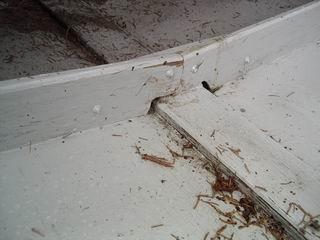
Lesson learned 5: Small limber holes are useless.
Don't fool Yourself believing, that water will flow through
this size (12 mm x 12 mm, 1/2" x 1/2") limber holes.
It won't!
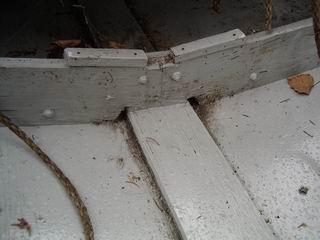
Look at the size of a dry leaf, compare it with the size of the limber hole. Take a guess: Will the leaf clog the hole?
